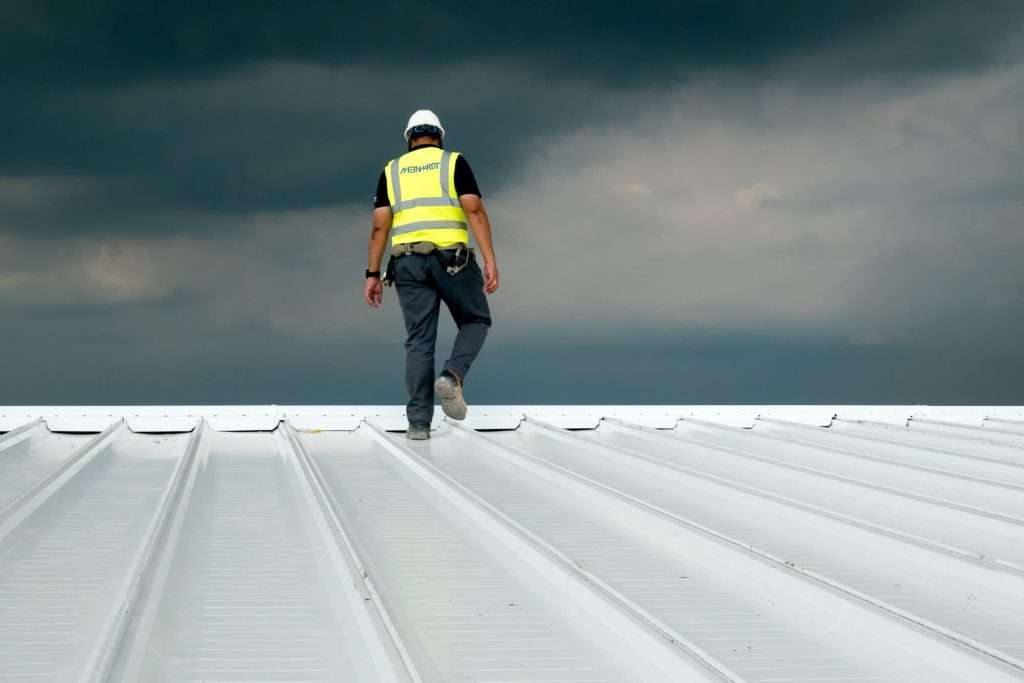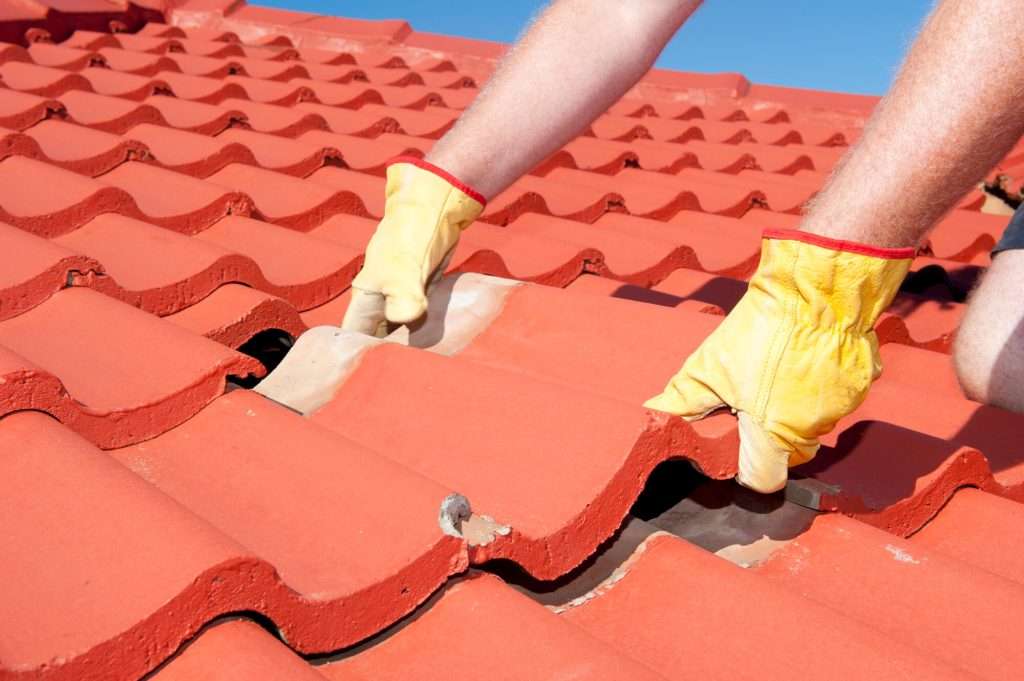When it comes to choosing the perfect roofing material for your Australian home, you’re faced with a plethora of options that can make the decision-making process quite overwhelming. Fear not, because we’ve got you covered with this ultimate guide that will walk you through the various types of roofing materials available, taking into consideration the unique Australian climate.
We’ll discuss the pros and cons of each material, as well as the types of roofs suitable for each option, to help you make an informed decision when it comes to selecting the best roofing material for your beloved home.
In this comprehensive guide, we’ll delve into the world of clay/concrete tiles, slate tiles, terracotta tiles, asphalt shingles, metal roofs, copper & zinc, corrugated, and Colorbond roofing materials. We’ll also explore the factors you need to consider when choosing a material, such as durability, energy efficiency, aesthetics, and cost.
We will also share information on the advantages of various roofing materials and the maintenance needed for each one. So, sit back, relax and allow us to help you find the ideal roofing option for your Australian home!

Types of Roofing Materials
When it comes to clay and concrete tiles, these durable options are known for their long lifespan and ability to withstand harsh weather conditions. They’re also fire-resistant, making them a good choice for bushfire-prone areas. However, their weight can be a downside, as they require strong support structures.
Slate tiles, on the other hand, offer a beautiful, high-end look with incredible longevity and weather resistance. They’re also eco-friendly, as they’re made from natural stone. The main downside to slate tiles is their high cost and need for skilled installation.
Terracotta tiles are another popular choice, thanks to their distinct appearance and excellent durability. They’re resistant to both fading and moisture, making them suitable for coastal areas. However, they can be quite heavy, so keep that in mind when assessing your home’s structural capabilities.
Asphalt shingles are a more affordable option, offering decent durability and a variety of styles and colours. They’re relatively easy to install, but may not be as long-lasting as other options.
For metal roofs, you have a range of choices, including copper, zinc, corrugated, and Colorbond. Copper and zinc are both known for their longevity and natural patina that develops over time, while corrugated and Colorbond roofs are lightweight and versatile, making them suitable for a variety of Australian homes.
Considerations for Australian Climate
Taking into account Australia’s diverse climate, you’ll want to consider the pros and cons of various materials to find the best match for your home.
From scorching heat to intense storms, your choice of roofing material needs to withstand the unique challenges of the Australian environment.
In high temperature regions, materials such as terracotta and clay/concrete tiles are ideal due to their thermal insulation properties, which help keep your home cool. On the other hand, slate tiles and metal roofs, including Colorbond, are great for both hot and cold climates as they are durable and energy-efficient.
In coastal areas, corrosion-resistant materials like copper, zinc, and Colorbond will better endure the salty air.
When it comes to extreme weather events, such as hailstorms and bushfires, certain roofing materials can provide more protection than others. Metal roofs, including corrugated metal and Colorbond, are particularly hail-resistant and can help protect your home from damage. For bushfire-prone areas, metal roofs, slate tiles, and terracotta tiles are excellent choices due to their non-combustible nature.
Conversely, asphalt shingles may not be the best option in these regions, as they can be more susceptible to damage from extreme weather events. Additionally, consider the overall weight of the roofing material, ensuring that your home’s structure can adequately support it.
Ultimately, your choice should balance aesthetics, practicality, and durability to ensure your home is protected from the unpredictable Australian climate.

Factors to Consider When Choosing a Material
As you navigate the world of roofing materials, it’s essential to weigh the factors that matter most to you, finding a balance between style, function, and longevity to create a roof that not only looks great but stands up to the challenges of the Australian climate.
Begin by considering the visual appeal and architectural style of your home. Clay or terracotta tiles are popular for their classic, timeless appearance and work well with Mediterranean or Spanish-style homes, while slate tiles offer a luxurious touch for more stately residences. For a modern, sleek look, you might opt for metal roofs or Colorbond. Asphalt shingles are versatile and can suit a range of styles, while copper and zinc can provide a striking and unique aesthetic. Corrugated roofing is a popular choice for rural and industrial settings, and it’s worth bearing in mind that the material you choose may impact the resale value of your home.
Next, consider the practical aspects of your chosen material. Durability and longevity are crucial, with slate, terracotta, and concrete tiles often boasting lifespans of 50 years or more. Metal roofs, copper, and zinc are also known for their long-lasting qualities, while asphalt shingles may need replacing every 20-30 years.
Consider the weight of the material, as some options, like slate or concrete tiles, may require additional structural support. Insulation and energy efficiency are important factors, too, with materials like Colorbond and metal roofing offering excellent thermal performance to keep your home cool in the summer and warm in the winter. Additionally, consider the ease of installation and maintenance, the cost of the material, and its resistance to fire, hail, and wind – all vital considerations for the Australian climate.
Once you have chosen a roofing material, it is important to get quotes from multiple roofing contractors. This will help you ensure that you are getting the best possible price for your project.
By taking the time to weigh the pros and cons of each material, you’ll be well on your way to selecting the perfect roof for your Australian home.
Benefits of Different Roofing Materials
Exploring the advantages of different roofing materials can assist you in choosing the best option for your individual needs and preferences.
Clay and concrete tiles are incredibly durable, with a lifespan of up to 50 years or more, making them an excellent long-term investment. They also have excellent fire resistance and insulation properties.
Slate tiles, on the other hand, are known for their natural beauty and longevity, lasting up to 100 years or more with proper maintenance. They are also low maintenance, fire resistant, and environmentally friendly.
Terracotta tiles provide a unique aesthetic appeal, with their warm, earthy tones and natural texture. They are energy efficient, helping to keep your home cool during hot summers and warm during the winters, and have a long lifespan of up to 50 years.
Asphalt shingles are one of the most popular roofing materials in Australia due to their affordability, ease of installation, and versatility in design. They typically last around 20 to 30 years and require minimal maintenance.
Metal roofs, including copper, zinc, and Colorbond, are known for their durability and resistance to extreme weather conditions, making them a popular choice in areas prone to storms and bushfires. They are also lightweight, energy efficient, and low maintenance, with a lifespan of up to 50 years. Corrugated metal roofs, in particular, are popular for their ability to withstand heavy loads and their ease of installation.
Colorbond roofs are made from steel coated with a durable, baked-on paint finish, offering a wide range of colours and design options to suit any home style.

Maintenance Requirements for Different Materials
It’s essential to consider the maintenance requirements of various roofing materials, as this can impact the long-term costs and your home’s overall upkeep.
For instance, clay and concrete tiles are durable and long-lasting, with a lifespan that can exceed 50 years. However, they can be prone to cracking and require regular inspection for damage.
Similarly, slate tiles are highly durable, with a lifespan of up to 100 years, but they can be fragile and may require periodic maintenance to replace broken or damaged tiles.
Terracotta tiles are another option with low maintenance requirements, but they may need occasional cleaning to remove moss, lichen, or other debris that can accumulate on their surface.
Asphalt shingles, on the other hand, are easy to maintain, but may need to be replaced more frequently, as their lifespan is typically around 20 to 30 years.
When it comes to metal roofs, they generally have low maintenance requirements, as they are resistant to rust, rot, and insect damage.
Copper and zinc roofs are particularly long-lasting, with lifespans of up to 100 years, and require minimal maintenance. Corrugated metal roofs are also low-maintenance, but you may need to periodically check for loose fasteners and reapply sealants as needed.
Colorbond roofing, a popular option in Australia, is known for its durability and low maintenance requirements, as it is resistant to chipping, peeling, and cracking. However, it is essential to ensure that any debris or leaves are regularly cleared off the roof to prevent water build-up and potential damage.
By carefully considering the maintenance requirements of each material, you can make an informed decision about the best roofing option for your Australian home.
Conclusion
Choosing the perfect roofing material for your Australian home is an important decision that should not be taken lightly. There are many factors to consider, such as the climate, your budget, and your aesthetic preferences. By taking the time to weigh all of your options, you can find the perfect material to protect your home from the elements and add value to your property.
In this blog post, we have discussed the pros and cons of various roofing materials, including clay and concrete tiles, slate tiles, terracotta tiles, asphalt shingles, metal roofs, copper & zinc, corrugated, and Colorbond. We have also explored the factors you need to consider when choosing a material, such as durability, energy efficiency, aesthetics, and cost.
Ultimately, the best roofing material for your Australian home is the one that meets your individual needs and preferences. By taking the time to do your research and weigh all of your options, you can find the perfect material to protect your home and add value to your property.

